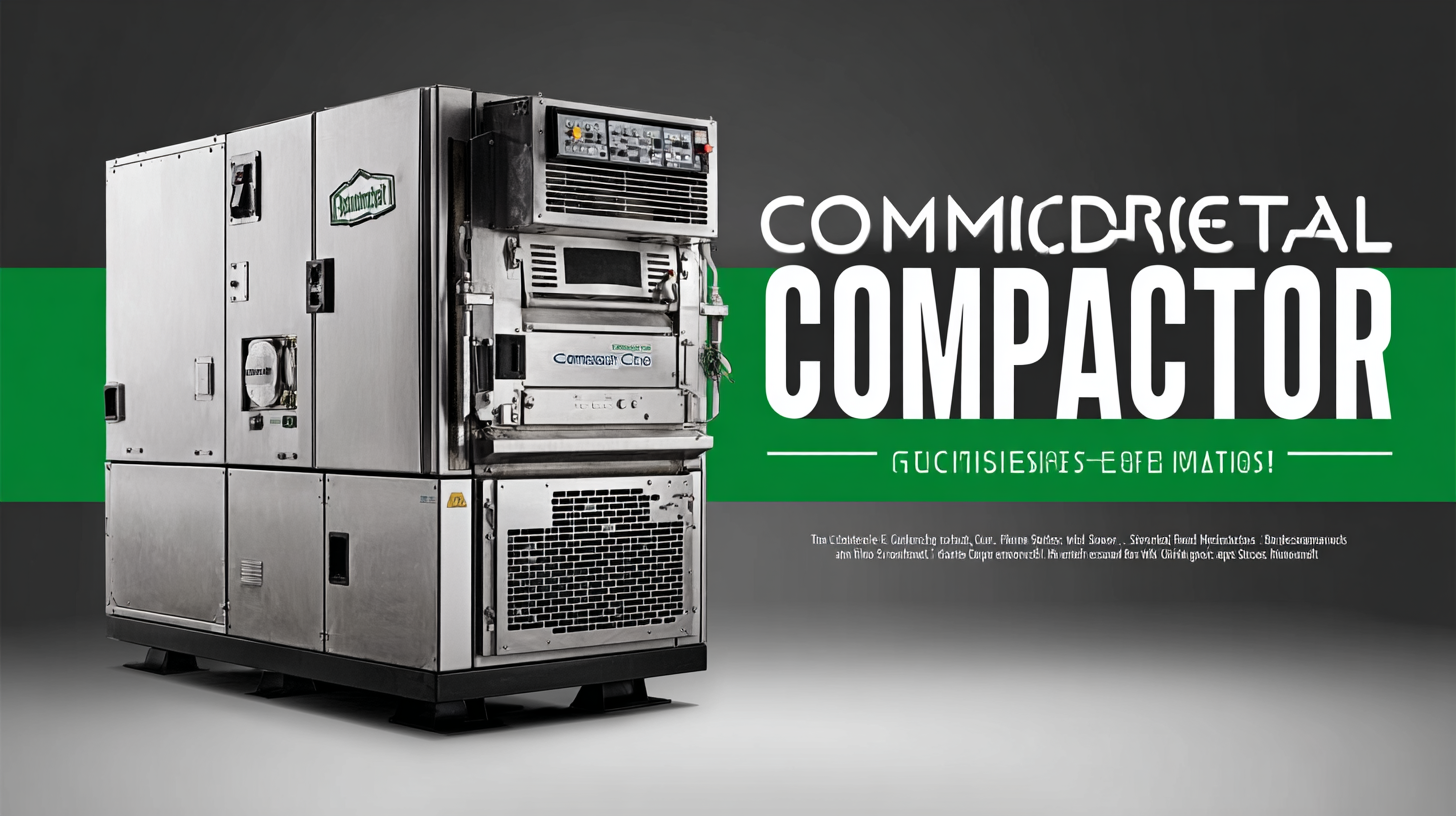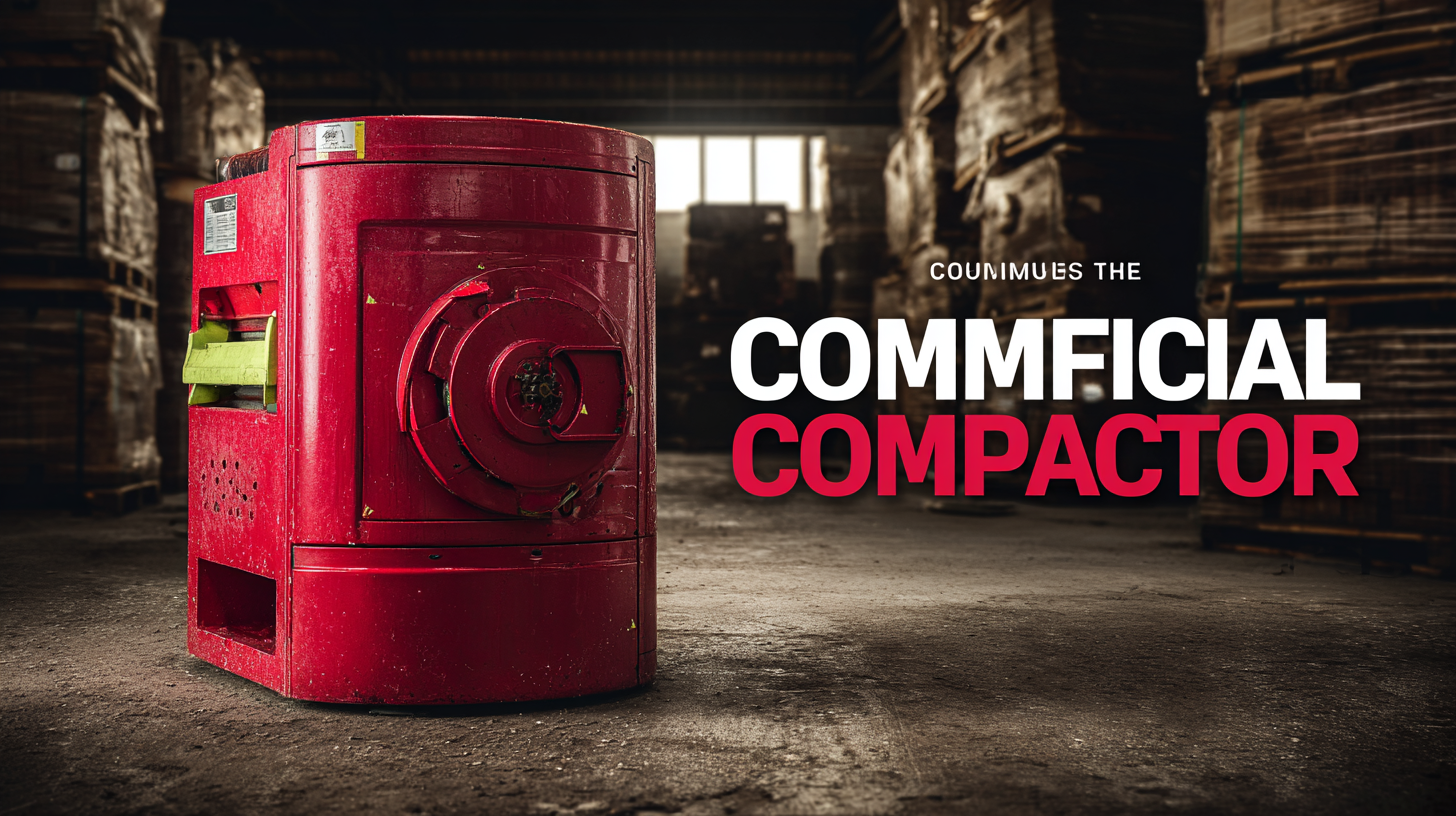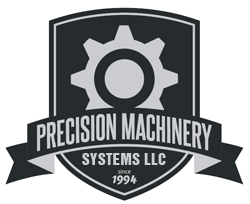Ultimate Guide to Choosing the Best Commercial Compactor: Key Features, Efficiency Metrics, and Cost-Saving Insights
In today's fast-paced business environment, efficiency and cost-effectiveness have become paramount for organizations looking to streamline operations and enhance waste management practices. According to a recent industry report by the Waste Management Association, companies that invest in high-quality Commercial Compactors can reduce waste volume by up to 80%, leading to significant savings on disposal costs and minimizing environmental impact. As businesses strive to optimize their operations, understanding the key features, efficiency metrics, and cost-saving insights associated with Commercial Compactors is crucial. This Ultimate Guide will not only help you navigate the complex landscape of compactors but will also provide top strategies for selecting a reliable supplier, ensuring you make an informed investment that meets your operational needs and contributes to sustainability goals.

The Role of Commercial Compactors in Waste Management Efficiency Enhancement
In the modern landscape of waste management, the role of commercial compactors has become increasingly vital in enhancing operational efficiency. As organizations strive to optimize their waste disposal processes, the implementation of efficient compactors can lead to significant reductions in volume, allowing businesses to manage waste more effectively. By compressing waste materials, these machines not only reduce the frequency of waste pickups but also contribute to lower transportation costs, providing lasting economic benefits.
Moreover, the market for smart waste management solutions is experiencing remarkable growth, with projections indicating a surge in demand for advanced compacting technologies. As cities and businesses seek innovative ways to streamline their waste operations, smart trash bins and commercial compactors are at the forefront of this evolution. By integrating smart technologies, such as IoT sensors and data analytics, organizations can enhance their waste management strategies, leading to more informed decisions and sustainable practices. In this context, understanding key features and efficiency metrics of commercial compactors becomes essential for any business aiming to improve waste management efficiency and reduce environmental impact.
Ultimate Guide to Choosing the Best Commercial Compactor: Key Features, Efficiency Metrics, and Cost-Saving Insights
| Feature | Description | Efficiency Metric | Cost Saving |
|---|---|---|---|
| Compaction Ratio | The measure of how much volume is reduced during compaction. | Up to 4:1 | Reduces dumpster sizes |
| Cycle Time | Time taken to complete one full compaction cycle. | 30-60 seconds | Increases operational efficiency |
| Power Consumption | Energy used during operation. | 0.5 - 3 kWh | Lower energy costs |
| Safety Features | Includes emergency stop buttons, safety guards. | Standard in modern models | Reduces workplace accidents |
| Maintenance Needs | Frequency and type of maintenance required. | Annual, with checks every 6 months | Cuts down repair costs |
| Material Compatibility | Types of materials the compactor can handle. | Paper, plastic, metal, food waste | Versatile waste management |
Key Features to Consider When Selecting the Right Compactor for Your Business
When selecting the right compactor for your business, there are several key features to consider that can significantly impact efficiency and cost-effectiveness. One of the primary considerations is the type of compactor. Forward and reversible plate compactors offer different advantages; forward plate compactors excel in linear applications, while reversible models provide enhanced maneuverability in tight spaces. According to recent market analyses, the vibratory plate compactor market is projected to expand at a compound annual growth rate (CAGR) of 5.2% from 2021 to 2028, indicating growing demand for efficient and versatile compaction solutions.

Another critical feature to evaluate is the machine's vibration system. Innovations such as oscillatory vibe systems have improved compactor performance, allowing for more precise compaction results and reduced environmental impacts. These advancements help optimize fuel consumption and minimize noise, aligning with industry trends toward sustainability. Furthermore, recent investments by leading manufacturers in new compaction models showcase a commitment to developing equipment that enhances both operational efficiency and user experience, ultimately supporting businesses in meeting their compaction needs effectively.
Evaluating Compactor Performance: Understanding Key Efficiency Metrics and Standards
When evaluating compactor performance, it's crucial to understand key efficiency metrics and standards that define operational effectiveness. One important metric is the
compaction ratio, which measures the volume reduction of waste. A higher compaction ratio indicates that the compactor is more efficient
at compressing waste, leading to less frequent disposal runs and significant savings on transportation costs. Understanding this metric helps businesses select a compactor that aligns with their
waste management needs while maximizing space utilization.
Another significant aspect to consider is the energy consumption of the compactor. Efficiency standards, such as those set by industry regulations, provide
benchmarks for energy usage during operation. Comparing different models against these standards can reveal which compactors offer the best energy efficiency,
potentially resulting in lower utility bills and a smaller carbon footprint over time. Evaluating these performance metrics ensures that businesses not only select the right compactor for
their requirements but also contribute to a more sustainable waste management approach.
Cost Analysis: How Commercial Compactors Drive Long-Term Savings for Enterprises
When it comes to managing waste effectively, commercial compactors emerge as vital tools for enterprises seeking to optimize operational costs. These heavy-duty machines not only reduce the volume of waste but also significantly lower disposal expenses. By compressing waste, businesses can decrease the frequency of pickups, leading to substantial savings on transportation and landfill fees. This long-term financial impact makes investing in a commercial compactor a strategic move for any organization.
Moreover, the efficiency metrics of compactors, including cycle time and compaction ratio, play a crucial role in justifying their cost. A higher compaction ratio indicates more waste can be packed into less space, maximizing storage and minimizing trips to disposal sites. By analyzing these efficiency metrics, enterprises can gain insights into how their compactor selection can lead to better waste management practices and enhanced cost savings over time.
In an era where environmental sustainability and cost control are paramount, the right commercial compactor can be a game-changer for businesses aiming to thrive while managing their waste responsibly.
Comparative Insights: Global Manufacturers and Their Impact on Compactor Quality and Innovation
When selecting the right commercial compactor, understanding the influence of global manufacturers on compactor quality and innovation is crucial. Leading companies, such as Compaction Solutions, WasteTech, and EcoPress, have set high standards in the industry by continuously investing in research and development. Their commitment to innovation has led to the creation of compactors that not only maximize waste reduction but also enhance operational efficiency through advanced technology and smart design features.
Furthermore, examining the comparative insights among these manufacturers reveals significant differences in product offerings and technological advancements. For instance, some manufacturers focus on energy-efficient models designed to minimize power consumption while others might prioritize durability and ease of maintenance. By analyzing these key aspects, businesses can make informed decisions that align with their operational needs and sustainability goals, ensuring they invest in a compactor that delivers optimal performance and cost savings over time. As the waste management sector evolves, staying abreast of these changes can provide companies with a competitive edge in choosing the best equipment for their requirements.

